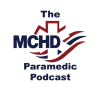Many terms have been introduced in the past few years to describe the decompensated patient with hypertensive acute pulmonary edema (APE). Call this condition what you will – APE, SCAPE or SCRAPE – the most important facets are to recognize these patients and then to work to aggressively lower both preload and afterload.
Patients with APE present with acute dyspnea, tachypnea and severe hypertension. They are often also hypoxic with diaphoresis and rales. Classically, initial treatment in this population has been non-invasive positive pressure ventilation (NPPV) and topical or sublingual nitroglycerin (NTG).
NPPV is on shaky ground these days, due to the concern for aerosol generation in the age of COVID-19. This makes preload and afterload reduction even more paramount in this critically ill group of patients. Topical NTG uptake is too slow to be of any benefit in EMS. In a well person, sublingual NTG is absorbed quickly, but how do APE patients present? They are tachypneic, often requiring positive pressure airflow, both of which dry out the oral mucosa. This makes sublingual distribution suboptimal at best. Are there other options?
The use of IV high-dose bolus NTG has been documented in the literature across the world since the 1970s. More recent U.S. emergency department and ICU data has spurred some to move this therapy to paramedics in the prehospital setting. In this episode of the MCHD Paramedic Podcast, Dr. Casey Patrick and Mike Perlmutter discuss their respective experiences from implementing through to publishing peer reviewed results of IV high-dose bolus NTG in APE patients.
Spoiler alert: this therapy is safe and effective for use by paramedics in the field. If you are in doubt, please have an open-minded listen and prepare to do a 180!
Bolus dose nitroglycerin with Mike Perlmutter
Listen to next: How to safely manage COVID-19 respiratory failure patients
References
2. https://www.tandfonline.com/doi/full/10.1080/10903127.2020.1711834













